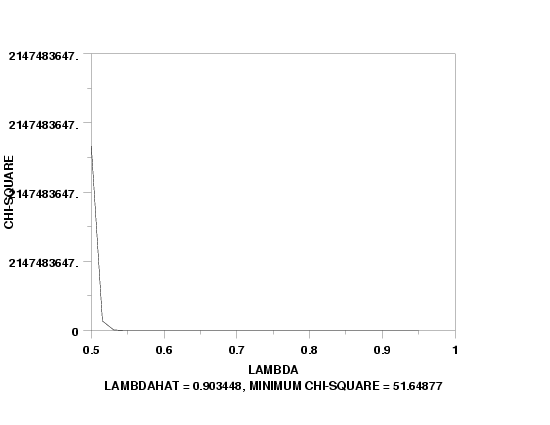

|
INTEGER FREQUENCY TABLEName:
There are two primary features for the binning:
<SUBSET/EXCEPT/FOR qualification> where <y> is a variable containing the raw data; <y2> is a variable where the class frequencies are stored; <xlow> is a variable where the lower limits for the class bins are stored; <xhigh> is a variable where the upper limits for the combined bins are stored; and where the <SUBSET/EXCEPT/FOR qualification> is optional.
before the INTEGER FREQUENCY TABLE command.
PPCC PLOT KS PLOT (plots minimum chi-square statistic for discrete distributions) CHI-SQUARE GOODNESS OF FIT
LET K = 3
LET LAMBDA = 0.9
LET Y = BOREL TANNER RANDOM NUMBERS FOR I = 1 1 500
LET Y2 XLOW XHIGH = INTEGER FREQUENCY TABLE Y
LET LAMBDA1 = 0.5
LET LAMBDA2 = 0.95
Y1LABEL CHI-SQUARE
X1LABEL LAMBDA
BOREL TANNER KS PLOT Y2 XLOW XHIGH
JUSTIFICATION CENTER
MOVE 50 5
TEXT LAMBDAHAT = ^shape, Minimum Chi-Square = ^minks

Date created: 6/20/2006 |